In the blog article you are about to read, you will discover the top five best choices for gaming video cards. The following video cards’ list does not include the most expensive video cards such as NVIDIA TITAN Xp, V or AMD RADEON Frontier Edition ones. The cards on the list are chosen according to various factors for what would make them the perfect investment for a gaming-oriented Desktop computer. These factors are: stream processors (shading units), memory specifics, core clock, their floating-point performance and a few other factors, such as gaming technologies available.
These video cards are rated considering all factors stated above, but neglecting the price of the cards. Power consumption is also considered, but does not affect the rating in any case. Depending on the manufacturer, the core clock can be tweaked leading to performance boosts different than the original card speeds. The original card specs will be provided to outline the performance of the video cards. Thus, the classification of the GPUs below is not set, but rather positions the cards in terms of the first being with the biggest capability and the ones after being more limited compared to the initial one.
1. NVIDIA GeForce GTX 1080 Ti
NVIDIA GeForce GTX 1080 Ti utilizes the latest technology in terms of memory – GDDR5X with 11GB capacity and a memory clock of 11,000 MHz and a 352-bit memory bus. That’s the biggest memory and memory clock sizes of all cards mentioned in this article. Not only that, but the 1080 Ti delivers 484.4 GB/s of memory bandwidth. The core clock is only 1,480 Mhz, but still better than Titan X. Thee card beats Titan X in almost every parameter and is cheaper than it, which speaks volumes about how fast technology develops. With 3584 Cuda cores (shading units) the NVIDIA GTX 1080 Ti is our top choice for a gaming video card.
The following features keep the card on top and without a realistic rival:
- Latest gaming technologies including the newewst GDDR5X Memory
- 3X times higher performance than the previous generation cards
- Next generation VR technology for the best VR experiences
The NVIDIA GeForce GTX 1080 Ti requires a 1x 6-pin and a 1x 8-pin power connectors and its estimated power consumption is around 220 Watts (for the base card), but that is justified from how powerful the card really is. The floating-point performance equates to 11,340 GFLOPS which is more than enough to cover the highest requirements for the latest video games which come out in 2018. The card is perfect for gaming in resolutions up to 1440P but still fares more than okay in 3840×2160.
Only the Titan V and Titan Xp can beat it, but they cost thousands of dollars and there are only minor increases in performance that are not justified for their high prices and gamers won’t feel the 1080 Ti lacking in any game.
2. NVIDIA GeForce GTX 1080
NVIDIA GeForce GTX 1080 has 8GB of GDDR5X memory and a memory clock of 10,008 MHz. The core clock (of the base card) is 1,607 Mhz, while the Cuda cores (shading units) are 2560 in number. The card is the little brother of the 1080 Ti, and although it has a higher core clock, the 256-bit memory bus, delivers slower memory bandwidth speed of 320.3GB/sec. The newer memory technology is still present which makes a perfect card for gaming up to 1440P display resolutions.
The following features make the GTX 1080 card great and unique:
- A high core clock of 1,607 Mhz
- Latest GDDR5X memory technology
- Better performance and power efficiency in Virtual Reality compared with previous generation cards
The NVIDIA GeForce GTX 1080 requires a 1x 8-pin power connector and its estimated power consumption is around 180 Watts. The floating-point performance amounts to 8,745 GFLOPS which is somewhat slower compared to its bigger brother (1080 Ti) but still nobody can take it away from the second spot.
NVIDIA GeForce GTX 1080 is VR friendly and has the latest technologies available on the current market, making it a satisfactory choice for almost every gamer that likes to get an enjoyable experience out of every game played.
3. AMD Radeon RX Vega 64
AMD Radeon RX Vega 64 has 8 GB of HBM-2 memory and a memory clock of 500 MHz (of the base model). That’s a huge difference in the memory clock compared to other cards of the same generation, but the memory bus of the card is 2,048 bit which overcompensates. The core clock is 1,247 Mhz which is less than the GTX 1080 cards, but the 4,096 Stream Processors (shading units) keep the card in the same range.
The following features make the AMD Radeon RX Vega 64 one of a kind:
- DirectX 12.0 and OpenGL 4.5 Support
- 2048-bit Memory Bus Interface
- Optimal for 3840 x2160 (4K) resolution gaming
The floating-point performance equates to 12,665 GFLOPS which is more than the GTX 1080, but more effective in higher resolutions such as 2160P and most gamers still do not run games at that resolution. The AMD Radeon RX Vega 64 requires a 2x 8-pin power connectors and the estimated power consumption is around 295 Watts.
In some aspects the RX Vega 64 is with much better stats, but one look at a gaming benchmark and it becomes apparent that the RX Vega 64 is better suited for other tasks than gaming, compared to the previous two cards on the list.
4. NVIDIA GeForce GTX 1070 Ti
NVIDIA GeForce GTX 1070 Ti has 8GB of GDDR5 memory and a memory clock of 8 Gbps with a standard 256-bit memory bus. The core clock is 1,506 Mhz, while the Cuda cores (shading units) are 2432 in number. The floating-point performance equals to 8,186 GFLOPS which is still great from an NVIDIA card of that class.
The following features make the card a good pick for gamers:
- Direct X 12_1 Support
- 7680×4320 Resolution Support (great for large displays)
- 2432 Cuda Cores (Shading Units)
The NVIDIA GeForce GTX 1070 Ti requires a 1x 8-pin power connector and its estimated power consumption is around 180 Watts. GTX 1070 Ti is still a very solid choice for most gamers as it beats most cards in its class and outperforms all video cards of previous generations, including the Titan X (except for the memory bandwidth, but that is expected considering the notable memory bus size difference).
The NVIDIA GeForce GTX 1070 Ti supports the latest VR technologies and even that it is running the older type of memory, it still has the latest gaming technologies implemented in it and available for heavy-duty gaming exploitation.
5. AMD Radeon RX 580
AMD Radeon RX 580 has 8 GB of the older, but still very much used GDDR5 memory technology and a memory clock of 8 Gbps. It has a memory bus of 256 bits but less rendering units compared to the GTX 1070 Ti. As to the core clock – it is 1,257 Mhz, but with 2304 Stream Processors (shading units). The amount of shading units is the lowest of all the previously mentioned video cards which leads us to the unsurprising floating-point performance of just 6,175 GFLOPS.
- Direct X 12 and OpenGL 4.5 Support
- Smooth 1440P gaming performance
- 2304 Stream Processors (Shading Units)
The AMD Radeon RX 580 requires a 1x 6-pin and a 1x 8-pin power connectors, while the estimated power consumption is around 185 Watts. Although, the RX 580 card performs slower than the rest on this list, it still packs a powerful punch, considering its price, power consumption and it is a perfect choice for gaming that do not need anything above a 1440P gaming experience.
Final Thoughts
This classification is not in any way a buyer’s guide, although it reflects most points which gamers should consider when buying a video card meant to play all games without problems and hiccups. These cards are best-sellers even if some of them are still used for [wplinkpreview url=”https://sensorstechforum.com/top-5-video-cards-gpu-mining-2018/”]GPU Mining in 2018 they are even better-suited for a true gaming experience covering all of the latest VR and gaming technologies currently available.














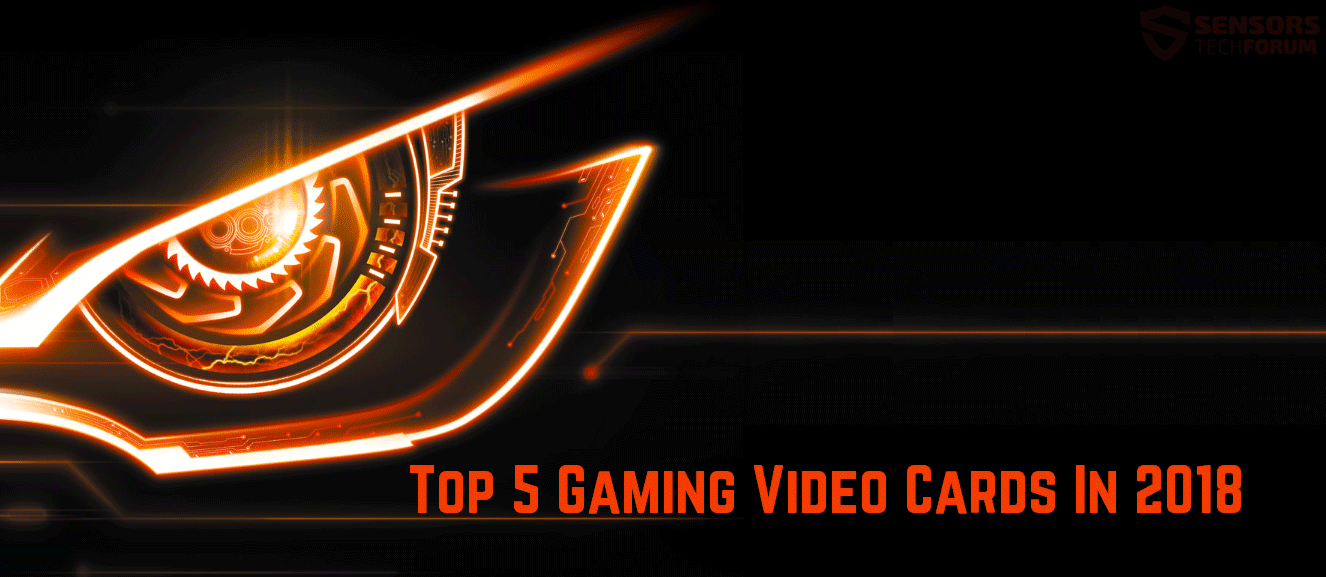
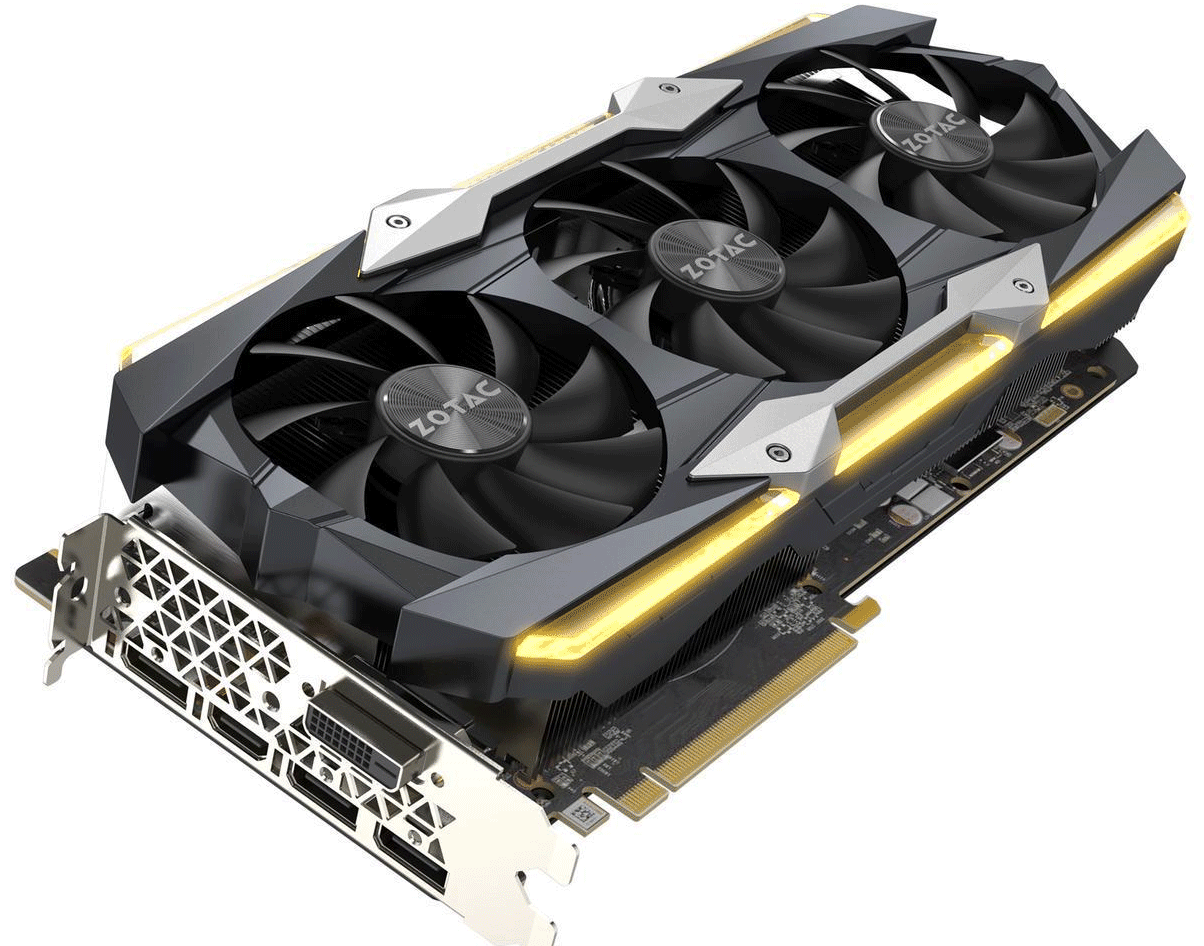
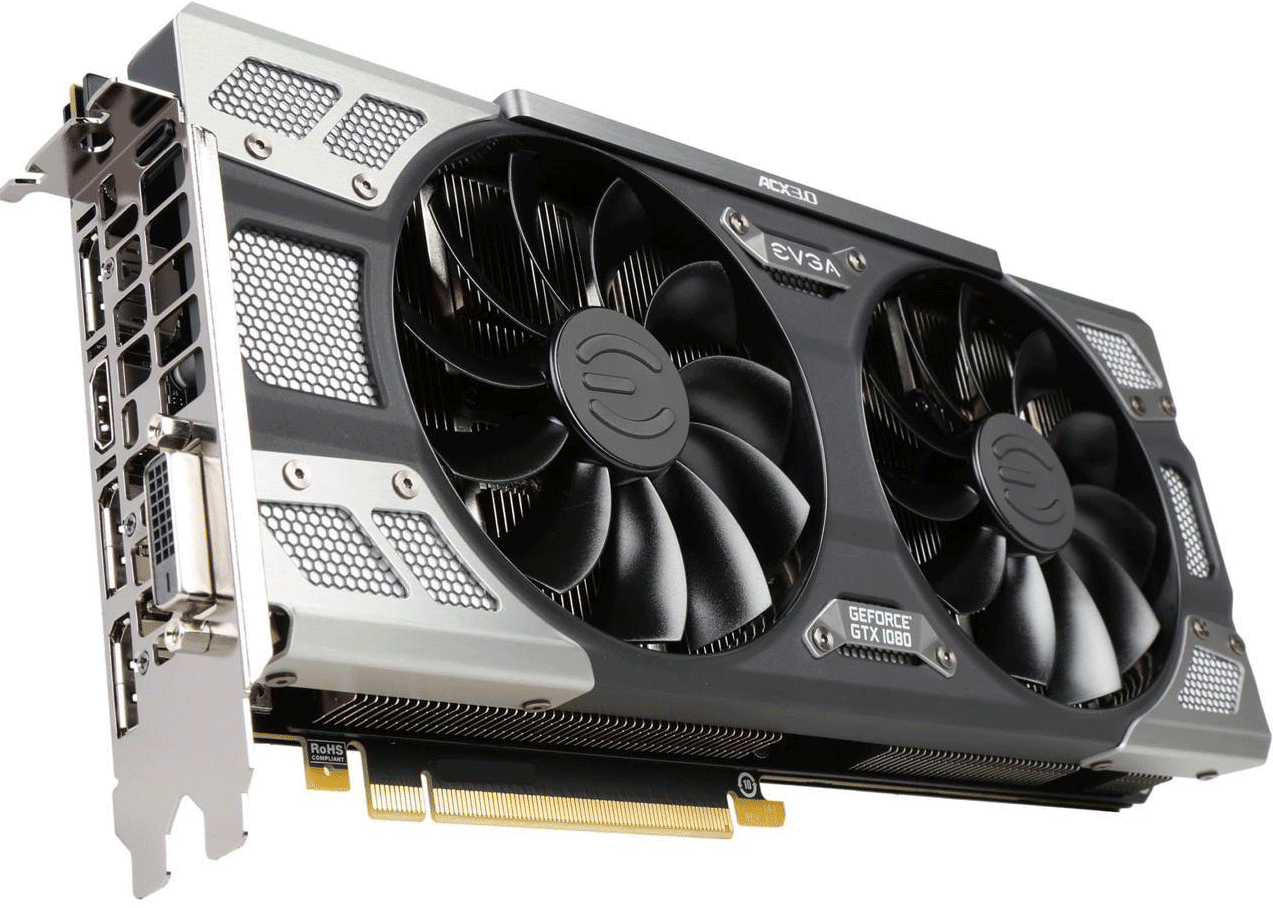

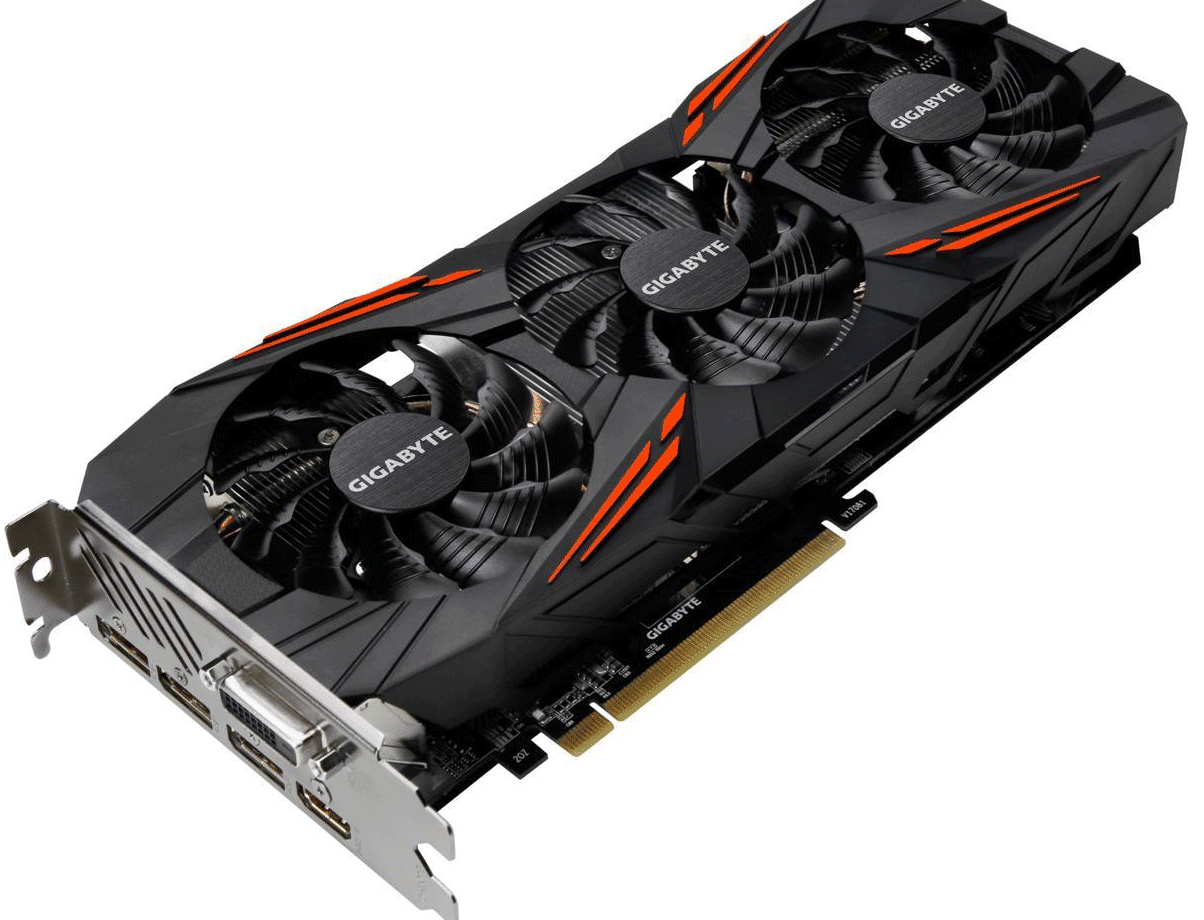
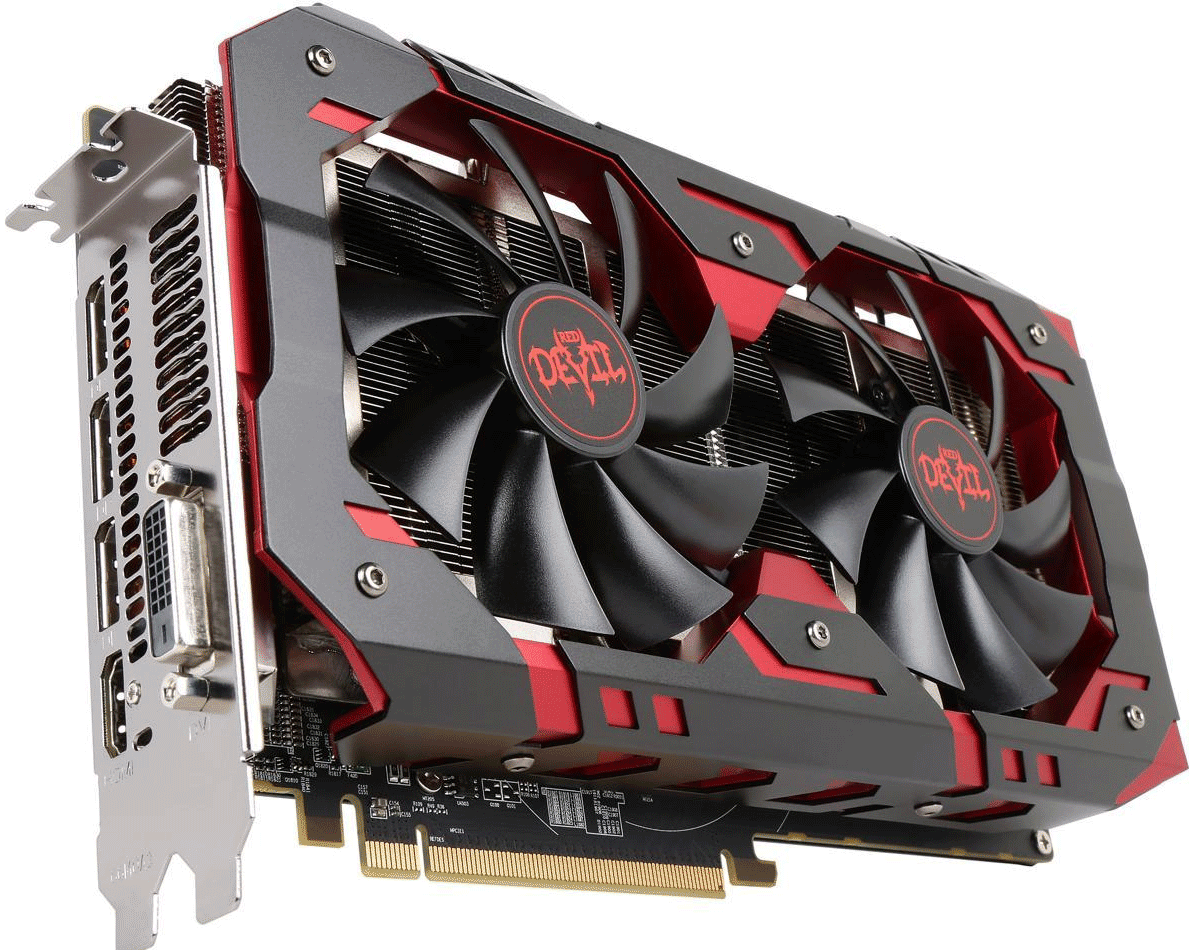

Eine top Auswahl! Die NVIDIA GeForce GTX 1080 Ti gefällt von Zotac gefällt mir von den 5 Grafikkarten am meisten!
Beste Grüße, Andreas